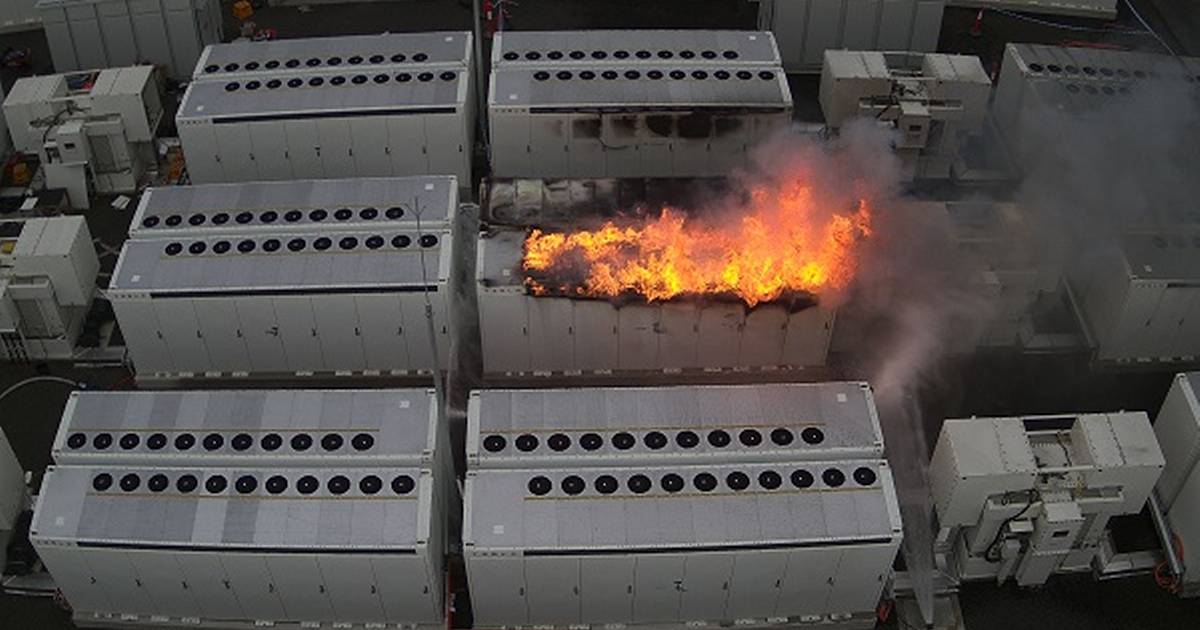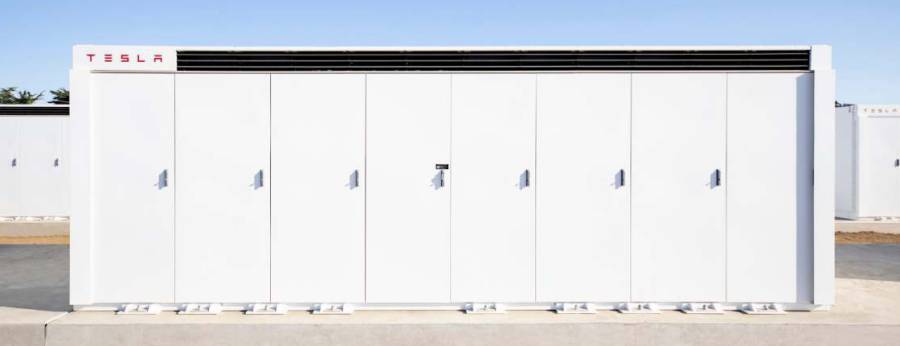
Victoria’s Big Battery project has experienced a setback after a fire broke out in a Tesla Megapack unit at the project site on Friday morning.
First, a bit of background.
France-headquartered Neoen contracted Tesla to deliver and operate a 300 MW / 450 MWh battery system consisting of 210 Tesla Megapacks at a site near Moorabool Terminal Station, just outside Geelong.
The goal of the Victorian Big Battery project is to boost energy system reliability, drive down electricity prices and support the state’s transition to renewables.
The venture isn’t Neoen’s first major Tesla-based energy storage project in Australia. The first was Hornsdale Power Reserve (Tesla Powerpack), which commenced operations in 2017 and has been expanded since. Hornsdale was profitable in its first year of operation and hasn’t experienced any major incidents.
Progress on the new project was going well – construction recently reached the halfway mark and the Australian Energy Market Operator issued the plant two dispatchable unit identifiers (VBBG1 and VBBL1) only last week, enabling it to begin testing.
But during initial testing on Friday morning, one of the Megapack containers caught fire. The site was disconnected from the grid, and thankfully no injuries occurred. CFA and Fire Rescue Victoria responded to the incident with more than 30 fire trucks and support vehicles, and around 150 firefighters.
The fire spread to a second container, but thanks to quick action didn’t go beyond.
In the latest update from the CFA posted at 3.30pm yesterday, the CFA said the fire had subsided significantly by that point. Crews were performing atmospheric monitoring around the cabinet and checking to see how active the fire is internally behind each of the doors.
A Watch & Act Warning was issued early Friday afternoon for toxic smoke for some nearby areas, with residents advised to close windows and doors, turn off heating and cooling systems, and bring pets indoors. However, mobile EPA air monitors here and here indicate good air quality in the local community in the last 48 hours.
“Investigation preparations are underway and physical inspections will commence once the CFA have completed their procedures,” said Neoen in an update last night. “Neoen would like to thank all of the authorities involved, in particular the teams at the CFA, Fire Rescue Victoria, and the EPA.”
—
UPDATE August 3 – The CFA declared the incident under control at 3.05pm on Monday. All the doors of the container of the battery were opened, with no sign of fire.
—-
Tesla Megapack Fire Safety
While generally very safe, one of the risks of lithium-ion battery storage is thermal runaway, a scenario where the temperature of a battery cell rises rapidly through a fault, feeding greater temperature rise that then spreads to other cells. This can happen so quickly that instead of a just a fire, an explosion can occur.
The Megapack has no built-in fire detection or suppression systems. A document I came across indicates the Megapack is designed to:
“ensure the battery modules are resistant to single cell thermal runaway propagation. This virtually eliminates all likelihood of a thermal event originating from an internal product failure.”
It will be some time before the cause of the fire is known, but the fact the container didn’t explode nor the fire spread rapidly throughout the complex is of course a Very Good Thing. This was likely in part due to Megapack design and project layout that provided firefighters time to get on top of things.
Something else that’s not clear at this point is if the battery chemistry in these MegaPacks is Lithium Manganese Cobalt Oxide (NMC) or Lithium Iron Phosphate (LiFePO₄). The latter is widely regarded as the safer of the two and Tesla had announced earlier this year it was making the switch.
While this incident no doubt had the battery storage nay-sayers salivating, it was also only recently a unit at the coal-fired Callide Power Station in Queensland exploded and caught fire. Unlike this situation, that incident had major knock-on effects – some of which will continue to be felt for a while to come.


 RSS - Posts
RSS - Posts



“…it was also only recently a unit at the coal-fired Callide Power Station in Queensland exploded and caught fire.” It’s a bit rich to compare a 20 year old facility with a brand new installation in an attempt to limit “nay-sayers salivating”.
I’m still confused about what angle the ‘nay-sayers’ are supposed to be taking. Is it that batteries are toxic and the fires difficult to resolve safely, or that batteries are prone to fire and thus a danger? The first is based in science, the latter … well are even the media pushing that angle???
Media no, just the “Anti Vaxers” of the energy world claiming Batteries are Toxic and can either explode or burn your house down.
Though to be fair I haven’t heard much from them since more people have solar and batteries now with proven safety.
No it’s not at all.
The unit in question had recently been overhauled in a very expensive process. It was refitted and then failed almost immediately.
A brand new unit that is being tested is definitely compareable to a 20yo facility. Google “bathtub curve”. Machines fail most during testing and comissioning and after they begin to wear out with a period of reliable stability in between.
It was a BBQ compared to the Morwell pit fire that coated Gippsland and New Zealand.
What I am wondering is whether Musk’s original offer to SA of so many days to install or it’s free still stands 🙂
I glad I invested in the Simpliphi Lithium Iron Phosphate (LiFePO₄).
1 Year later, and their going strong, average about 1 cycle every 2 or 3 days.
So 10 years is looking good.
So Telsa are changing to LiFePO, I wonder how that will go for the vehicle fleet.
Powerwall 3 on LiFePO?
As i understand it the system had just been installed and was under testing when the fire started .